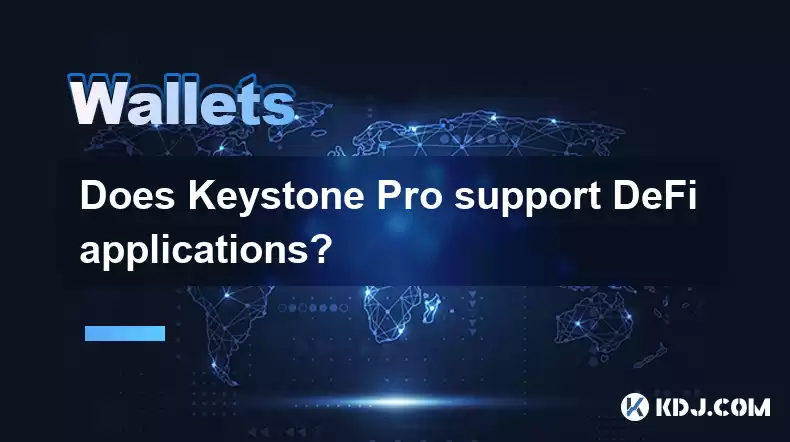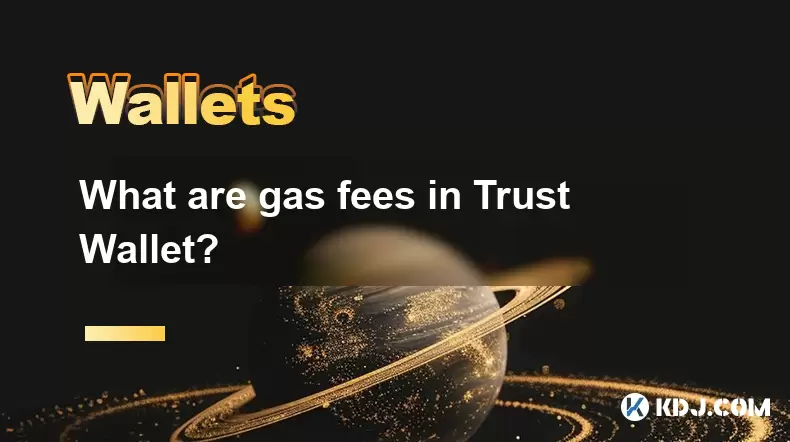-
 Bitcoin
Bitcoin $114400
1.32% -
 Ethereum
Ethereum $3499
2.20% -
 XRP
XRP $2.922
4.26% -
 Tether USDt
Tether USDt $0.0000
0.03% -
 BNB
BNB $752.6
1.53% -
 Solana
Solana $161.8
1.64% -
 USDC
USDC $0.9999
0.01% -
 TRON
TRON $0.3267
1.32% -
 Dogecoin
Dogecoin $0.1991
3.02% -
 Cardano
Cardano $0.7251
3.29% -
 Hyperliquid
Hyperliquid $38.32
3.36% -
 Stellar
Stellar $0.3972
7.58% -
 Sui
Sui $3.437
2.74% -
 Chainlink
Chainlink $16.29
3.65% -
 Bitcoin Cash
Bitcoin Cash $545.3
3.70% -
 Hedera
Hedera $0.2482
7.49% -
 Ethena USDe
Ethena USDe $1.001
0.03% -
 Avalanche
Avalanche $21.40
2.02% -
 Toncoin
Toncoin $3.579
1.56% -
 Litecoin
Litecoin $109.3
2.20% -
 UNUS SED LEO
UNUS SED LEO $8.951
-0.18% -
 Shiba Inu
Shiba Inu $0.00001220
2.75% -
 Polkadot
Polkadot $3.613
2.99% -
 Uniswap
Uniswap $9.173
3.78% -
 Monero
Monero $302.6
2.62% -
 Dai
Dai $0.0000
0.00% -
 Bitget Token
Bitget Token $4.320
1.52% -
 Pepe
Pepe $0.00001048
3.40% -
 Cronos
Cronos $0.1314
4.33% -
 Aave
Aave $259.4
3.54%
Does Keystone Pro support DeFi applications?
Keystone Pro supports DeFi apps on networks like Ethereum and Binance Smart Chain, allowing secure interactions via wallet interfaces like MetaMask.
Apr 25, 2025 at 07:42 am

Introduction to Keystone Pro
Keystone Pro is a hardware wallet designed to provide users with a secure and user-friendly way to manage their cryptocurrency assets. As the cryptocurrency ecosystem continues to expand, users are increasingly interested in leveraging their hardware wallets for more than just simple storage and transactions. One of the most popular areas of interest is the integration with Decentralized Finance (DeFi) applications. In this article, we will explore whether Keystone Pro supports DeFi applications and how users can interact with these platforms using their hardware wallet.
Understanding DeFi Applications
Decentralized Finance (DeFi) applications are built on blockchain technology and enable users to engage in financial activities such as lending, borrowing, trading, and yield farming without the need for traditional financial intermediaries. These applications often require users to interact directly with smart contracts on blockchain networks like Ethereum, Binance Smart Chain, and others.
Keystone Pro's Compatibility with DeFi
Keystone Pro is designed to support a wide range of cryptocurrencies and blockchain networks, which is crucial for its compatibility with DeFi applications. The hardware wallet supports networks like Ethereum, Binance Smart Chain, and others, which are commonly used by DeFi platforms. This means that Keystone Pro can theoretically be used to interact with DeFi applications on these supported networks.
Interacting with DeFi Applications Using Keystone Pro
To interact with DeFi applications using Keystone Pro, users need to follow a series of steps to ensure their transactions are secure and executed correctly. Here is a detailed guide on how to do this:
Connect to a Compatible Wallet Interface: Keystone Pro can be connected to various wallet interfaces that support hardware wallets, such as MetaMask, Trust Wallet, or MyEtherWallet. These interfaces act as a bridge between the hardware wallet and the DeFi applications.
Set Up the Connection: Once you have chosen a compatible wallet interface, you will need to set up the connection with Keystone Pro. This typically involves installing the necessary software or browser extension and configuring it to recognize your Keystone Pro device.
Access the DeFi Application: With the connection established, navigate to the DeFi application you wish to use. Most DeFi applications have a user interface that allows you to connect your wallet. Click on the "Connect Wallet" button and select the wallet interface you are using (e.g., MetaMask).
Authorize the Connection: The DeFi application will prompt you to authorize the connection. This will involve signing a message or transaction on your Keystone Pro device. Follow the prompts on the device to confirm the connection.
Interact with the DeFi Application: Once connected, you can now interact with the DeFi application. This could involve depositing funds into a liquidity pool, borrowing against your collateral, or engaging in other DeFi activities. Each action will require you to sign transactions on your Keystone Pro device.
Confirm Transactions: When you initiate a transaction within the DeFi application, it will be sent to your Keystone Pro for confirmation. Carefully review the transaction details displayed on the device and confirm if everything looks correct.
Security Considerations When Using DeFi with Keystone Pro
When using Keystone Pro to interact with DeFi applications, it is important to keep in mind several security considerations:
Verify Transaction Details: Always verify the transaction details on your Keystone Pro device before confirming. This ensures that you are not unknowingly signing off on a malicious transaction.
Use Strong Passphrases: Protect your Keystone Pro with a strong passphrase to prevent unauthorized access. This is especially important when dealing with DeFi applications, where the stakes can be high.
Keep Software Updated: Ensure that both your Keystone Pro firmware and the wallet interface software are up to date to protect against known vulnerabilities.
Be Wary of Phishing: DeFi platforms can be targets for phishing attacks. Always access DeFi applications through official channels and be cautious of any unsolicited requests for information or funds.
Limitations and Considerations
While Keystone Pro can be used to interact with DeFi applications, there are some limitations and considerations to keep in mind:
User Interface: Some DeFi applications may have user interfaces that are not optimized for use with hardware wallets, which can lead to a less seamless experience.
Transaction Speed: Confirming transactions on a hardware wallet can take longer than using a software wallet, which may be a consideration for time-sensitive DeFi activities.
Support for Advanced Features: Not all DeFi applications may support advanced features like gas optimization or batch transactions when used with a hardware wallet like Keystone Pro.
Frequently Asked Questions
Q: Can I use Keystone Pro with any DeFi application on Ethereum?
A: Keystone Pro supports the Ethereum network, so you can use it with DeFi applications built on Ethereum. However, you should ensure that the specific DeFi application you want to use is compatible with hardware wallets and the wallet interface you are using.
Q: Is it safe to connect my Keystone Pro to a DeFi application?
A: As long as you follow best practices for security, such as verifying transaction details and using strong passphrases, it can be safe to connect your Keystone Pro to a DeFi application. Always access DeFi applications through official channels to avoid phishing attempts.
Q: Can I use Keystone Pro for yield farming on DeFi platforms?
A: Yes, you can use Keystone Pro for yield farming on DeFi platforms that are compatible with the wallet interfaces supported by Keystone Pro. You will need to deposit your assets into the liquidity pools and confirm transactions on your device.
Q: Do I need to keep my Keystone Pro connected to the internet to use it with DeFi applications?
A: No, Keystone Pro does not need to be connected to the internet to use it with DeFi applications. The device communicates with the wallet interface through a secure connection, and transactions are signed offline on the device itself.
Disclaimer:info@kdj.com
The information provided is not trading advice. kdj.com does not assume any responsibility for any investments made based on the information provided in this article. Cryptocurrencies are highly volatile and it is highly recommended that you invest with caution after thorough research!
If you believe that the content used on this website infringes your copyright, please contact us immediately (info@kdj.com) and we will delete it promptly.
- Kaspa, HBAR, and Cold Wallet: A New York Minute on Crypto's Latest Moves
- 2025-08-04 09:11:54
- Ethereum Whale Watch: Selling Pressure and Price Volatility
- 2025-08-04 09:11:54
- XRP ETF Mania: Teucrium's Crypto Triumph and the Altcoin Frenzy
- 2025-08-04 09:30:13
- Crypto Wallet Scam: A $900K Loss & What You Need to Know
- 2025-08-04 09:35:13
- Dogecoin's Wild Ride: Elliott Wave, Stochastic RSI, and What's Next, Ya Know?
- 2025-08-04 09:40:12
- Shiba Inu (SHIB), Crypto Investments, and the Meme Coin Evolution: What's the Deal?
- 2025-08-04 09:45:17
Related knowledge

What is a watch-only wallet in Trust Wallet?
Aug 02,2025 at 03:36am
Understanding the Concept of a Watch-Only WalletA watch-only wallet in Trust Wallet allows users to monitor a cryptocurrency address without having ac...

How to fix a stuck pending transaction in Trust Wallet?
Aug 03,2025 at 06:14am
Understanding Why Transactions Get Stuck in Trust WalletWhen using Trust Wallet, users may occasionally encounter a pending transaction that appears t...

What is a multi-coin wallet in Trust Wallet?
Aug 03,2025 at 04:43am
Understanding Multi-Coin Wallets in Trust WalletA multi-coin wallet in Trust Wallet refers to a digital wallet that supports multiple cryptocurrencies...

How to switch between networks in Trust Wallet?
Aug 02,2025 at 12:36pm
Understanding Network Switching in Trust WalletSwitching between networks in Trust Wallet allows users to manage assets across different blockchains s...

How to check my full transaction history on Trust Wallet?
Aug 02,2025 at 09:24am
Understanding Transaction History in Trust WalletTrust Wallet is a widely used non-custodial cryptocurrency wallet that supports a broad range of bloc...

What are gas fees in Trust Wallet?
Aug 04,2025 at 06:14am
Understanding Gas Fees in Trust WalletGas fees in Trust Wallet refer to the transaction costs required to execute operations on a blockchain network. ...

What is a watch-only wallet in Trust Wallet?
Aug 02,2025 at 03:36am
Understanding the Concept of a Watch-Only WalletA watch-only wallet in Trust Wallet allows users to monitor a cryptocurrency address without having ac...

How to fix a stuck pending transaction in Trust Wallet?
Aug 03,2025 at 06:14am
Understanding Why Transactions Get Stuck in Trust WalletWhen using Trust Wallet, users may occasionally encounter a pending transaction that appears t...

What is a multi-coin wallet in Trust Wallet?
Aug 03,2025 at 04:43am
Understanding Multi-Coin Wallets in Trust WalletA multi-coin wallet in Trust Wallet refers to a digital wallet that supports multiple cryptocurrencies...

How to switch between networks in Trust Wallet?
Aug 02,2025 at 12:36pm
Understanding Network Switching in Trust WalletSwitching between networks in Trust Wallet allows users to manage assets across different blockchains s...

How to check my full transaction history on Trust Wallet?
Aug 02,2025 at 09:24am
Understanding Transaction History in Trust WalletTrust Wallet is a widely used non-custodial cryptocurrency wallet that supports a broad range of bloc...

What are gas fees in Trust Wallet?
Aug 04,2025 at 06:14am
Understanding Gas Fees in Trust WalletGas fees in Trust Wallet refer to the transaction costs required to execute operations on a blockchain network. ...
See all articles

























































































